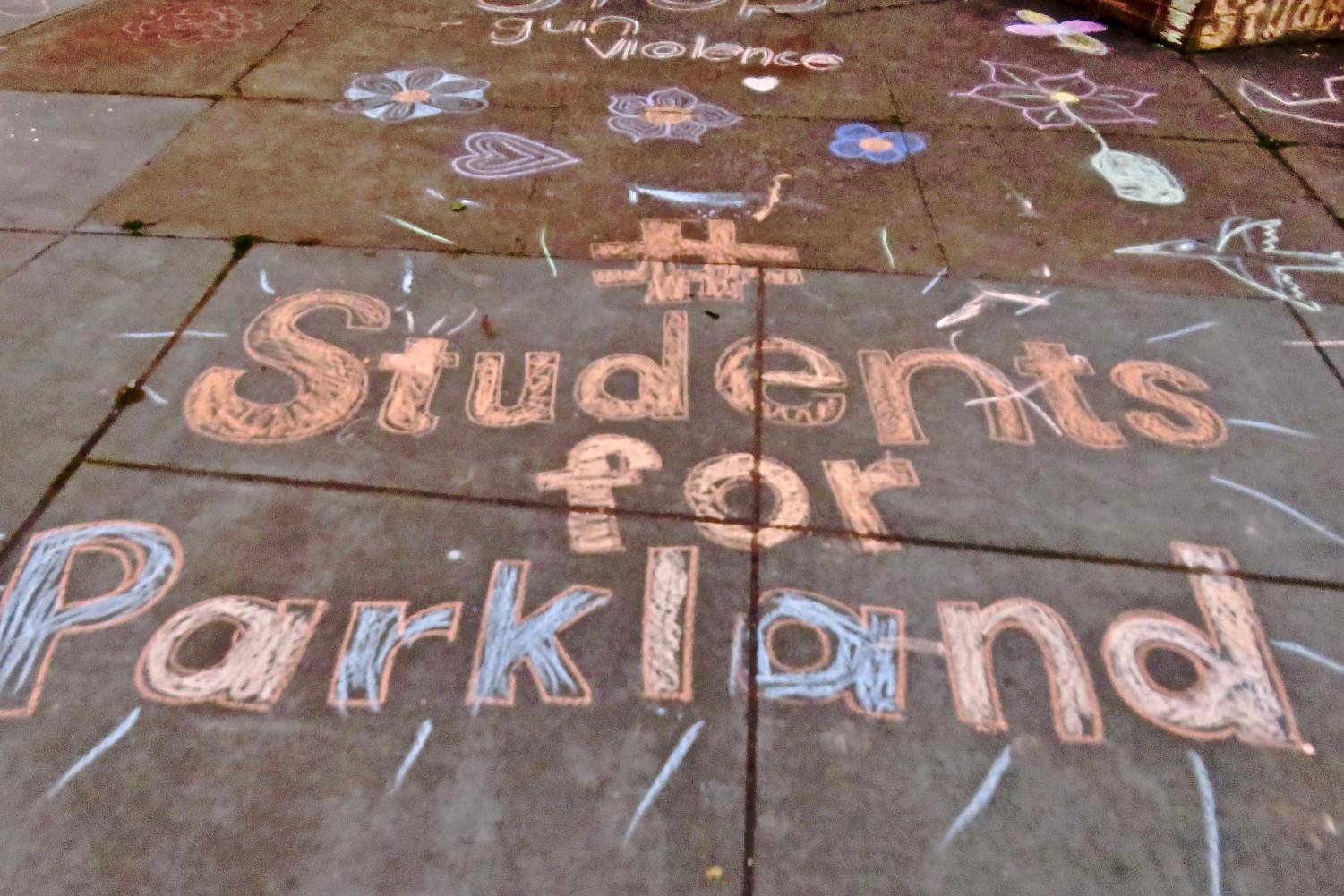Their Legacy
Two years after Parkland shooting impact still prevailing
February 13, 2020
The Marjory Stoneman Douglas High School shooting on February 14, 2018, marked a turning point for the country. Following the deaths of 17 of their classmates and teachers, teenage activists David Hogg, Emma Gonzalez, Cameron Kasky, Jaclyn Corin, and Alex Wind, among many others, led the battle against a government that has previously failed to pass gun safety laws and organizations that influence the prevention of common-sense laws.

Picture of the five Parkland activists.
The five teenagers who became the face of gun safety reform for the country started their battle a mere four days after tragedy struck their high school.
They had a name, goals, and plans for nationwide events.
The Never Again Movement began fighting for universal background checks and scheduled a nationwide protest for five weeks after the shooting on March 24. The group had big plans for gun safety laws in general but “the assault-weapons ban is the most difficult and that’s the longest term thing,” said Emma Gonzalez.
She went on to summarize everything that their suggested policies included. “That would also entail closing the gun-show loopholes, closing straw purchases, and instilling the red-flag system. We also want to get rid of high-capacity magazines, and we want to raise the age from eighteen to twenty-one”
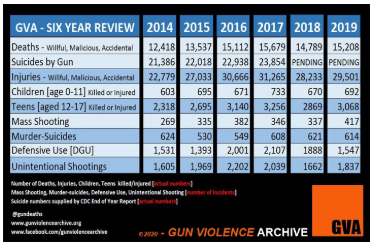 Even though there were fewer gun-related deaths and mass shootings in 2018 as compared to 2017, there were still close to 350 mass shootings and was named the worst year for school shootings. This included the 24 incidents causing injury or death on a school campus and resulted in 36 deaths and 79 injured, says Education Week.
Even though there were fewer gun-related deaths and mass shootings in 2018 as compared to 2017, there were still close to 350 mass shootings and was named the worst year for school shootings. This included the 24 incidents causing injury or death on a school campus and resulted in 36 deaths and 79 injured, says Education Week.
Following the Parkland shooting and teenage activism after the tragedy, many laws were passed to prevent another devastating act from happening.
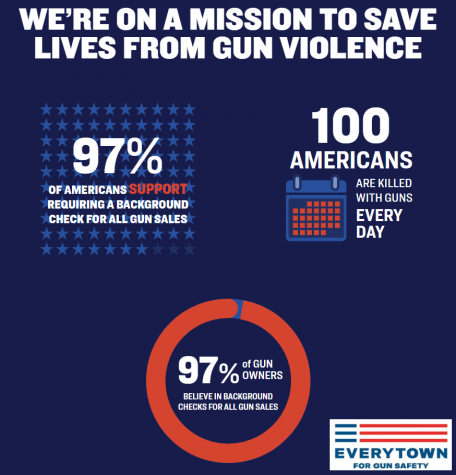 Nationally, a bill was passed to ban bump stocks which marked a step in the right direction for common-sense gun control.
Nationally, a bill was passed to ban bump stocks which marked a step in the right direction for common-sense gun control.
On the other end of the spectrum, lawmakers in D.C. refuse to pass a law requiring universal background checks even though 85% of the nation supports Universal Background Checks and 97% support general background checks, according to studies from Harvard and the Everytown project.
In 2018, 67 different gun safety laws were enacted in 26 states and D.C.
Most know the steps that Florida and California took with their gun safety laws, but they were not the only states that passed gun safety laws in 2018. They were joined by Delaware, New Jersey, Vermont, Washington, Louisiana, Nebraska, New York, Virginia, Illinois, Maryland, Massachusetts, Rhode Island, Georgia, Wisconsin, Oregon, Connecticut, South Dakota, Kansas, Pennsylvania, Utah, Hawaii, Ohio, Tennessee, Indiana, and DC in the passage of 11 different laws.
The laws covered mental health, minimum age, prohibited people, research centers, safe storage, safety training, untraceable/undetectable guns, urban gun violence reduction programs, trafficking, waiting periods, and domestic abuse.
Every year Giffords Law Center takes into account the legislation passed in a given year by each state and any steps they took to reduce gun violence. The following were the best, worst, and most improved states for gun safety in 2018.
According to Giffords Law Center, the “Best State” for gun safety is California which “continues to have the strongest gun safety laws in the country, earning an A on the Gun Law Scorecard, and one of the lowest gun death rates.”
A more impressive statistic reads “In 20 years, as it implemented comprehensive gun safety reforms, California cut gun deaths in half—twice the rate of the rest of the country.”
On the other end of the spectrum, Mississippi was named the “Worst State” in 2018. “Mississippi has the weakest gun laws in the nation, the fifth-highest gun death rate, and earned an F yet again on the Gun Law Scorecard. The state exhibits a reckless disregard for the safety of its residents by failing to require a background check for private party transfers, as well as failing to regulate assault weapons, unsafe handguns, and bulk firearm purchases.”
The effect of the Never Again, Moms Demand, Students Demand, and Everytown movement can most noticeably be seen in Florida’s score by Giffords. They won the 2018 award for “Most Improved” when they “enacted an extreme risk protection order law, a higher minimum age for buying firearms, and stronger waiting periods.”
Giffords continues in their praise with “This drastic improvement to the state’s previously very weak gun laws resulted in Florida raising its grade from an F to a C-…”
They ended their summary with a note of warning that Florida and other states “…still have a long way to go to protect their residents from gun violence…”
The laws passed in the above states did reduce the number of gun-related deaths nationwide. In 2017 before most states started passing gun control there were 15,679 gun-related deaths. In 2018 those numbers began to drop with 14,789 deaths.
With fewer gun laws passed in 2019, the fatality rate shot back up to 15,208. Following those trends, researchers have concluded that passing gun control laws do reduce the number of deaths.
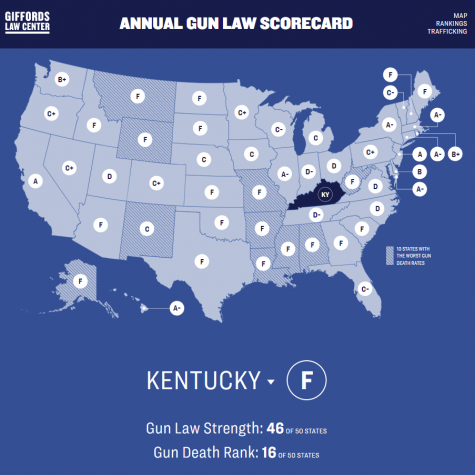
With the country and 26 states taking so many steps forward it surprised many when Kentucky, who received an F on Giffords Score Card, took two steps back in 2019 with the passage of SB150, a bill making it possible for people to conceal carry without a permit.
To make matters worse the Senate passed SB150 on the first anniversary of the Parkland shooting.
With the passage of the legislature, it also got rid of the $60 permit fee which helped to fund the local sheriff and the state. Without this funding sheriff’s office such as the Pulaski County Sheriff’s Office “could potentially lose some $44,000” the Commonwealth Journal noted. In Pulaski County alone there were some 2,200 permits issued in 2018.
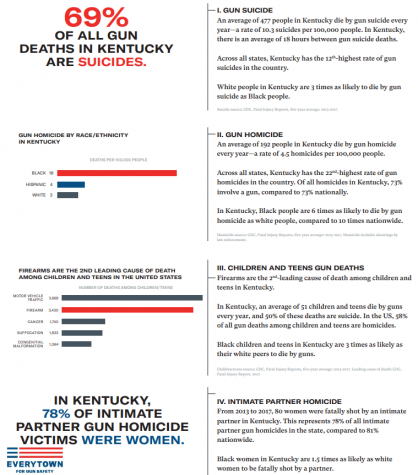
Not only does the passage of SB150 do away with a crucial income source for local law enforcement, it could also increase the number of gun deaths in the Commonwealth.
In a study done by Everytown, “Kentucky has the 15th-highest rate of gun deaths in the United States” with an average of 690 deaths annually.
The majority of gun deaths in KY are suicide at 69%. This translates to roughly 477 deaths per year. The passage of a red flag law could greatly reduce that number since those will a potential mental health issue or suicidal tendencies would no longer have access to a firearm.
The second highest cause of gun deaths is homicide with an average of 192 people per year. Kentucky has the “22nd-highest rate of gun homicides in the country.”
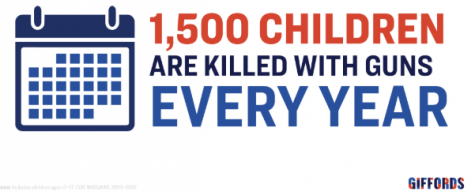
For those under the age of 18 gun violence is the second leading cause of death just behind motor vehicle accidents. Of these gun deaths, 50% is suicide.
Along with these startling statistics, Giffords summarized that “Kentucky failed to pass any significant firearm legislation…” Their conclusion went on to explain that not only is Kentucky not part of the solution they are causing problems nationwide. “Due to its weak gun safety laws, Kentucky is a leading exporter of crime guns to states with stronger laws.”
Many organizations play a large role in influencing Kentucky’s government but one of the larger financial contributors to congressional candidates is the NRA. In the 2016 election, the NRA donated close to $20,000 spread across five Republican candidates. The candidates, Rand Paul, James Corner, Andy Barr, Hal Rogers, and Brett Guthrie, have led the battle against common-sense gun safety laws along with Savannah Maddox who encouraged gun rights activists at a recent rally in Frankfurt.
Maddox was also one of the leading forces behind the passage of SB150.
It seems counterintuitive that Kentucky is passing pro-gun laws when the state is no stranger to school shootings and gun violence in general. Mere weeks before the Parkland shooting a student opened fire in Marshall County High School near Benton, Kentucky. There were two deaths and 18 injuries.
Following Marshall County, Senate Bill 1, “School Safety and Resiliency Act”, was put into place and called for the hiring of more resource officers, counselors, and mental health workers in schools. The act also called for mandatory suicide prevention courses for all school employees.
Although this bill has the best of intentions it offers no funding for the efforts it calls for. Without providing funding the bill is essentially useless. Assuming that the necessary funding falls onto the school district the schools with lower incomes will not be able to take the steps the law mandates, thus defeating the effectiveness of the law.
Another point to consider is this law, although very progressive for the Commonwealth, does nothing to prevent mass shootings and gun violence in general. It targets the struggles that teenagers across the country face which often time is the cause of school shootings. In this position, the law could be effective but the state would only see a reduction in teenage gun-related deaths, not those that take place at home or elsewhere. It also comes back around to a lack of funding.
While Kentucky continues to struggle in their battle against gun violence nationwide, the predictions for 2020 are not in the public’s favor. With the upcoming election experts worry that gun safety laws will be put on a backburner while issues like immigration and climate change take the spotlight. As of February 11, 2020, there were 4,441 gun-related deaths and 32 mass shootings for 2020.
Lots has happened nationwide and in every state since the Marjory Stoneman Douglas shooting in 2018 and as the United States continues to grow gun safety will continue to be the main debating point. The best solution is not clear but as we continue to work for a safer country we can remember those who lost their lives since it is in their legacy that we fight gun violence.
Kentucky remembers Bailey Nicole Holt, a fifteen-year-old from Marshall County. We also remember her classmate Preston Ryan Cope, also a fifteen-year-old from Marshall County.
From Parkland we remember Alyssa Alhadeff (14), Martin Duque Anguiano (14), Nicholas Dworet (17), Aaron Feis (37), Jaime Guttenberg (14), Christopher Hixon (49), Luke Hoyer (15), Cara Loughran (14), Gina Montalto (14), Joaquin Oliver (17), Alaina Petty (14), Meadow Pollack (18), Helena Ramsay (17), Alex Schachter (14), Carmen Schentrup (16), Peter Wang (15), and Scott Beigel (35).
The list of those we have lost to gun violence in the past decade is miles long so we remember these names as those that we may have known or as those that were the names behind the Never Again movement that led to so much positive change across the nation.
Links for more information about the victims and important vocabulary:
Artist Nava Lundy Creates Portraits of All 17 Parkland Shooting Victims
https://www.nbcnews.com/slideshow/florida-school-shooting-leaves-families-distraught-n848166
https://everytownresearch.org/documents/2015/11/firearm-terminology-vocabulary.pdf/
https://www.afterparklandmovie.com/
